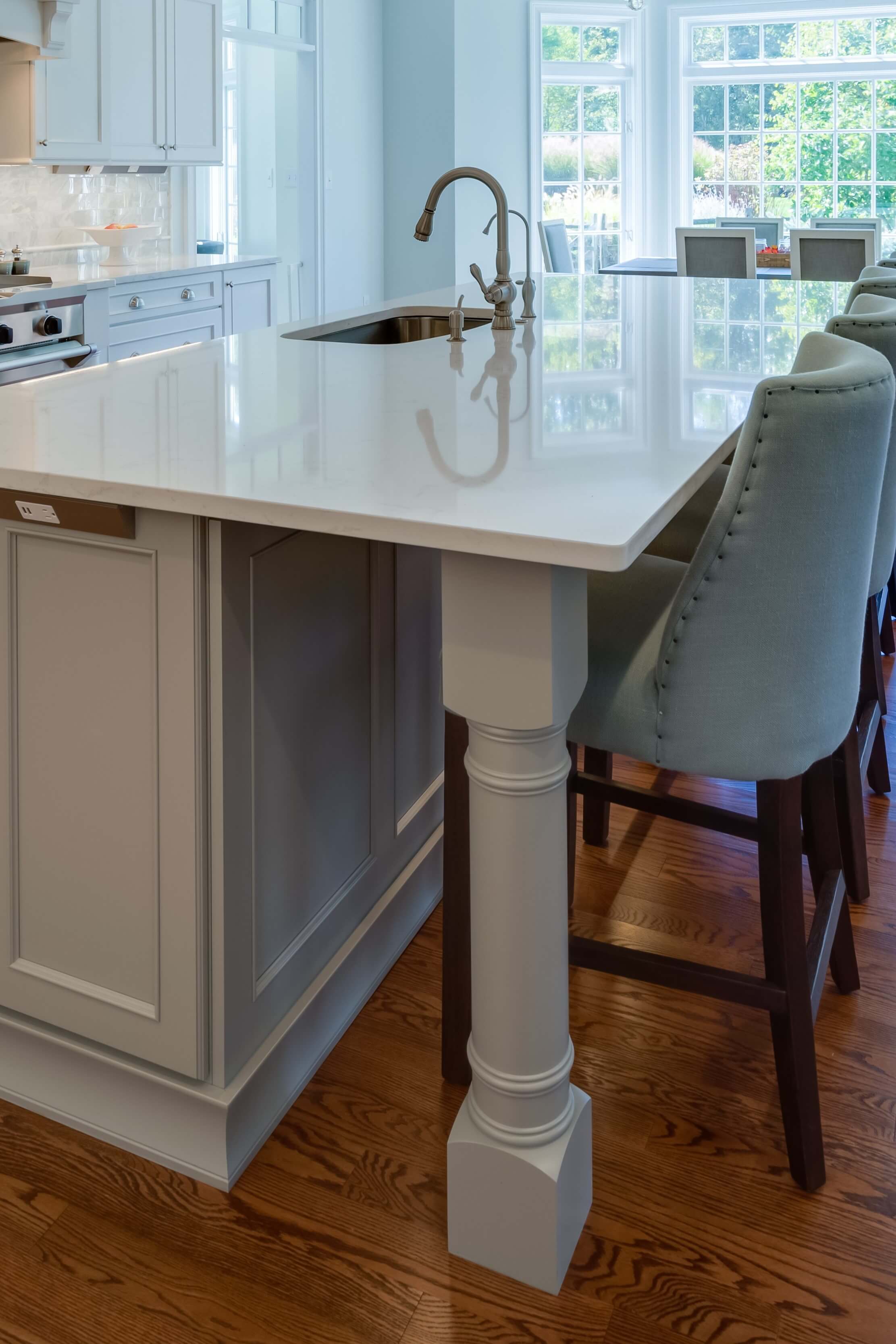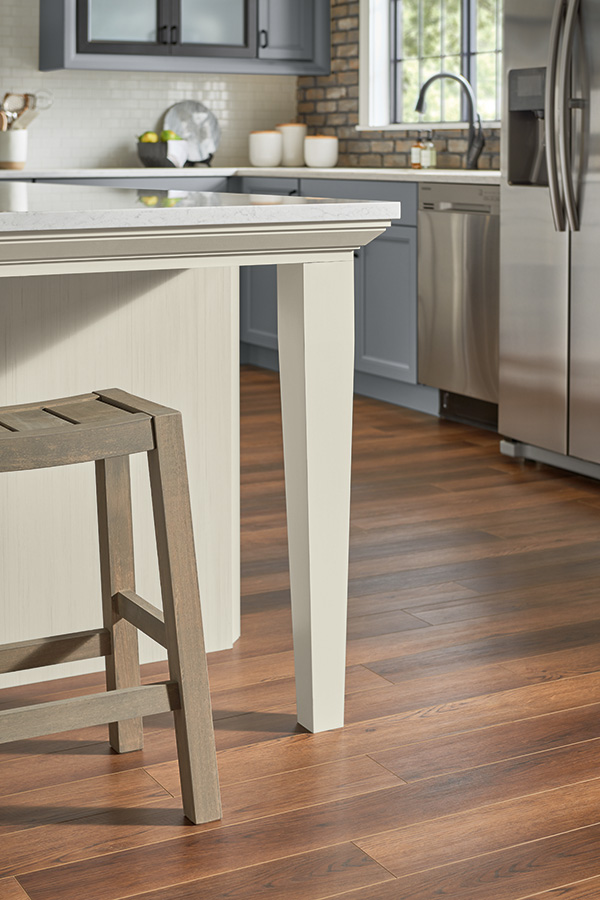The Leading Kitchen Island Leg Styles to Complement Any Kind Of Style Aesthetic
The Leading Kitchen Island Leg Styles to Complement Any Kind Of Style Aesthetic
Blog Article
The Value of a Sturdy Cooking Area Island Leg in Producing a Functional Cooking Location
A tough cooking area island leg offers as an essential element in establishing a functional cooking setting, giving needed support for both the countertop and numerous cooking area tasks. As kitchen areas evolve into multifunctional locations for food preparation, dining, and socializing, the choice of products and style factors to consider for island legs comes to be increasingly crucial.
Advantages of Sturdy Island Legs
Providing crucial assistance, sturdy kitchen area island legs play a crucial role in improving the capability and sturdiness of cooking area islands - kitchen island leg. These legs not just bear the weight of the kitchen counter and any type of added items positioned on the island, yet likewise add to the general security of the structure. A well-supported kitchen island makes sure that it continues to be practical and upright, also under hefty use, which is particularly essential in busy kitchen atmospheres
Furthermore, durable island legs can improve the aesthetic allure of the kitchen area. They supply a strong framework that can match various style styles, from contemporary to typical. This adaptability permits house owners to tailor their kitchen islands according to individual taste while making certain that the structural integrity stays uncompromised.
Along with their supportive role, robust kitchen area island legs can additionally boost safety. A steady island minimizes the threat of crashes brought on by tipping or wobbling, which is specifically essential in houses with children or senior people. Strong legs can promote a seamless flow of activities, allowing for effective meal preparation and social communications within the cooking area room. Ultimately, buying sturdy kitchen island legs is essential for a functional and visually pleasing cooking area.
Materials for Kitchen Island Legs
When selecting materials for kitchen island legs, toughness and visual charm are vital aspects to think about. One of the most usual products include hardwood, metal, and crafted wood, each offering one-of-a-kind benefits.
Wood, such as maple, cherry, or oak, is a traditional selection due to its toughness and ageless appeal (kitchen island leg). It can stand up to considerable weight and is resistant to put on, making it ideal for high-use kitchen area settings. Additionally, hardwood can be stained or painted to enhance various kitchen styles
Steel legs, frequently crafted from stainless-steel or functioned iron, offer a modern-day and industrial look. They are unbelievably strong and can sustain significant loads while being immune to moisture and warm, which is useful in a cooking area. Steel legs can additionally be easily cleaned up, boosting their practicality.

Layout Factors To Consider for Stability
The selection of products for cooking area island legs directly influences the design considerations for stability. When making a cooking area island, it is extremely important to review the weight-bearing ability of the picked products. Much heavier materials, such as strong timber or metal, usually offer better security, specifically why not try here under the tension of day-to-day usage.
Additionally, the leg layout should include proper geometry to improve security. A larger base raises the support area, decreasing the danger of tottering or tipping. Factor to consider needs to also be offered to the elevation of the legs; out of proportion leg sizes can lead to discrepancy, endangering the total security of the island.
Moreover, the distribution of weight throughout the island is essential. Making certain that the leg positioning aligns with the heaviest components, such as kitchen counters and devices, will even more improve security.
Maintenance Tips for Long Life

Cleansing is another important facet of upkeep. Depending upon the product of the legs-- whether timber, metal, or composite-- suitable cleansing approaches ought to be utilized. For wood legs, a gentle wipe with a moist towel and an ideal wood cleaner will help protect their finish. Metal legs may require a light polish to stop rust and preserve their gloss.
Furthermore, tightening bolts and screws frequently can guarantee stability and stop tottering. Consider enhancing the legs with additional brackets or sustains to boost resilience if the kitchen island experiences heavy use. Lastly, using a protective finish or sealant can protect against dampness and discolorations, extending the life expectancy of the legs. By following these maintenance tips, homeowners can guarantee their kitchen area island legs stay practical and robust for several years ahead.
Selecting the Right Leg Design
Normal upkeep makes sure that kitchen area island legs continue to be useful and sturdy, yet picking the appropriate leg design is just as crucial for both appearances and assistance. The selection of leg design check my site can substantially influence the overall design and consistency of your cooking area.

Performance is one more critical aspect. As an example, thicker legs or those with a durable base can support much heavier kitchen counters and tools, boosting the island's energy. Alternatively, slim legs might produce an airy appearance, suitable for lighter designs but potentially much less encouraging.
Verdict
In recap, the importance of strong cooking area island legs can not be overstated in the development of a functional cooking location. These legs supply important assistance, improve stability, and add to the overall visual of the cooking area. By thoroughly choosing ideal products and layouts, as well as implementing appropriate upkeep practices, the longevity and performance of kitchen islands can be ensured. Ultimately, purchasing robust island legs is fundamental to achieving a reliable and safe culinary atmosphere.
A durable kitchen area island leg offers as a basic element in establishing a useful food preparation environment, offering required support for both the countertop and various kitchen area activities.Providing essential support, sturdy kitchen read island legs play a pivotal role in improving the capability and resilience of kitchen islands. Inevitably, spending in durable kitchen island legs is essential for a practical and aesthetically pleasing cooking area.
Consideration should additionally be provided to the height of the legs; disproportionate leg sizes can lead to inequality, endangering the general security of the island.
Wood legs provide warmth and a traditional appearance, while steel legs offer a contemporary and commercial feel.
Report this page